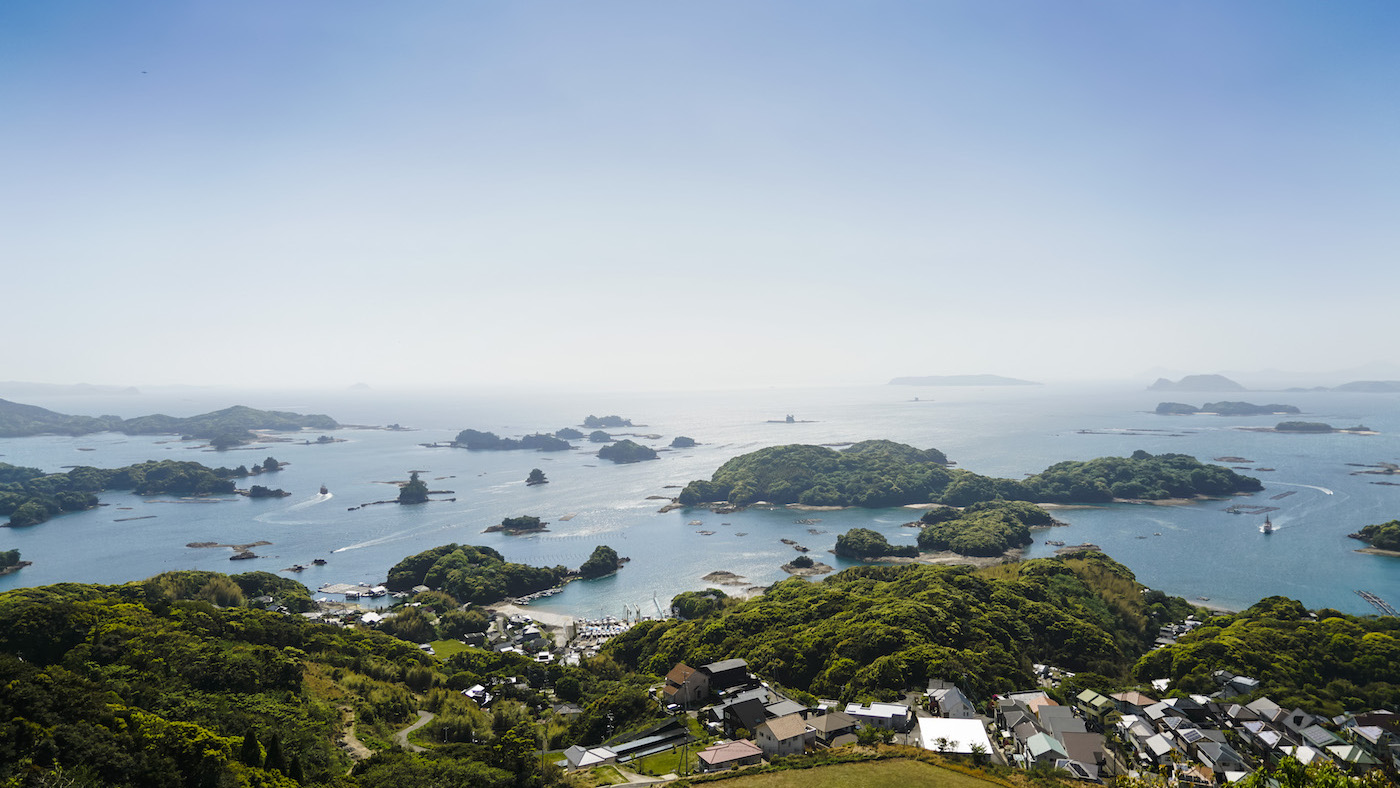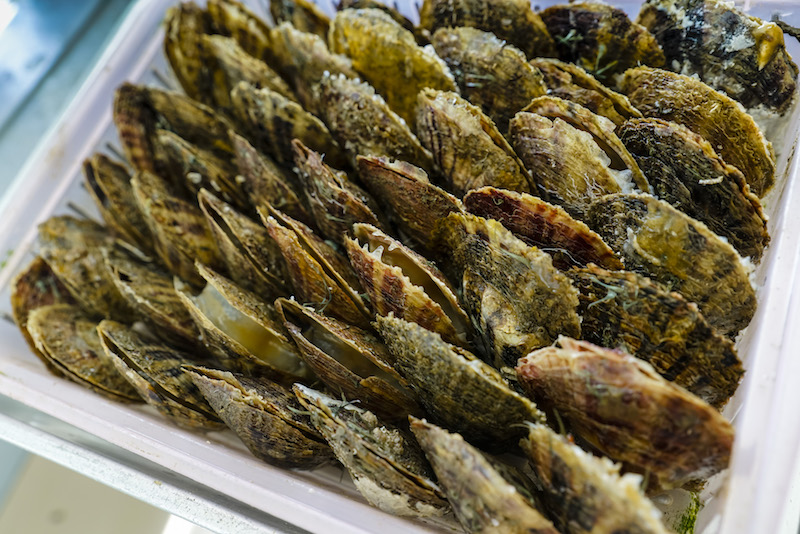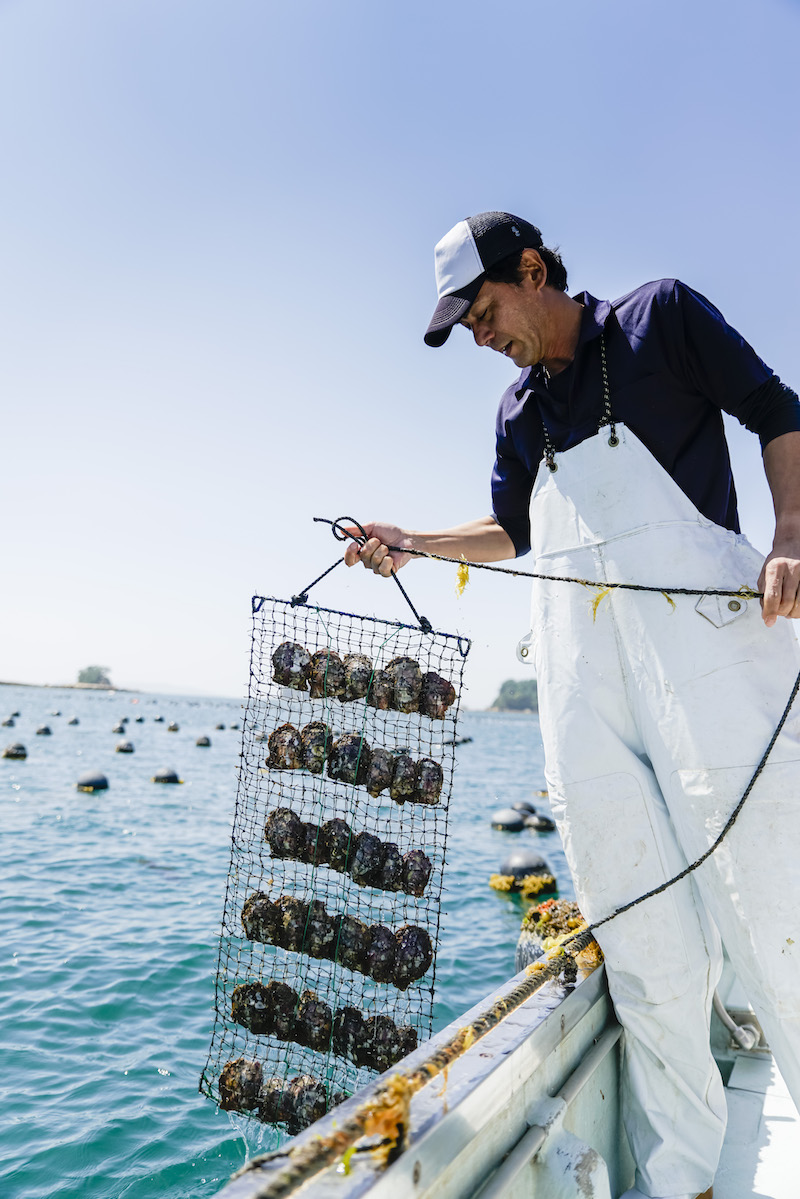Tasaki pearls: a journey to Japan
Tasaki’s Akoya pearls are shaped by the sea and harvested according to decades old traditions

There are many souvenirs that one can obtain to mark a trip to Japan. Possible keepsakes include the masu, a small square box made from fragrant cedar or Hinoki wood and used to serve saké; or folded sensu paper fans, or a tin of Hato Sabure – biscuits baked in the shape of a dove. Following a trip to Kujukushima – an archipelago of 208 small islands in Nagasaki’s Saikai National (marine) Park – I returned with an altogether different memento: a loose, milky white Akoya pearl, discovered hidden inside an oyster just a few hours earlier.
It is here, by the northwest coast of Japan’s third largest island, Kyushu, that Shunsaku Tasaki began farming pearls in 1933. Tasaki officially set up his eponymous business in 1954; today, the luxury brand operates three pearl farms – two in Japan, one installed on a sequestered Myanmar island – in addition to a Kobe design and production hub and a sprawling Ginza, Tokyo flagship boutique. “When learning about the history of Tasaki and its DNA, I realised that pearl farms are the heart of this company,” says Toshikazu Tajima, who joined the enterprise as CEO in 2009, following roles with the Japanese arms of fashion houses Christian Dior and Fendi. “Like a human heart supplying oxygen to the body, at Tasaki the pearl farms supply new ideas and materials.”
Tasaki’s Kujukushima pearl farm follows a surprisingly simple blueprint: built on stilts, a small oyster shed sits above pale green waters. A team of 30 – today, most wear plastic slippers or white rubber boots – reach their workbenches via a wooden boardwalk. Their short walk follows a daily morning prayer at a Shintō oyster shrine, which is also the sacred location of an annual thanksgiving ceremony presided over by a kannushi, or shrine priest. The farmers’ work follows a longstanding annual cycle: between April and November, 1.2 million oysters are manually fitted with a nucleus, while the harvest of the previous year’s crop begins in December, when cooled waters allow for easier oyster shucking.
The Week
Escape your echo chamber. Get the facts behind the news, plus analysis from multiple perspectives.

Sign up for The Week's Free Newsletters
From our morning news briefing to a weekly Good News Newsletter, get the best of The Week delivered directly to your inbox.
From our morning news briefing to a weekly Good News Newsletter, get the best of The Week delivered directly to your inbox.

Tasaki’s method of farming pearls is based on the discoveries of entrepreneur Mikimoto Kōkichi, who first succeeded in culturing pearls in the late 19th century. The Kujukushima site is dedicated to the Akoya pearl: lustrous and round in shape, this small gem measures between 7-8mm on average.
At Tasaki, the path to a perfect Akoya pearl begins when 18-month-old oysters are put to sleep (tactics include limiting food). Following a 20-minute-long bath in a nigari solution – also known as bittern, this organic brine-like coagulant is also used in the production of tofu, and its list of ingredients includes potassium ions, magnesium and calcium – anaesthetised oysters are gently prised open and held in place in a metal contraption.
A nucleus bead – here, the team uses polished beads made from Mississippi clam shells – enveloped in a tiny cut of donor tissue is then grafted into each oyster’s mantle, using handheld tweezers and hypodermic needles. In reaction to the foreign body, the mantle tissue creates a pearl sack that secretes nacre to coat the nucleus in many pearlescent layers. Today, I watch as Tasaki’s experts deftly open oysters, insert the small package, and reach for pastel-coloured plastic baskets to select the next shell; with this precise choreography, they complete around 800 oysters per day.
Then follows the recovery period: shortly after the treatment, oysters are left to convalesce as they are grouped in heavy nets submerged into shallow waters from pontoons. As pearls slowly build up around nuclei, oysters are moved further and further into deep waters, where buoys hold baskets that each contain dozens of the molluscs. Working from small-engined boats, farmers take great care in tending their precious charge; the oysters’ upkeep includes a regularly cleansing of shells. Following this month-long incubation period, pearls are harvested. It’s a laborious undertaking with a slim yield: I am told that only around 160,000 of the 800,000 pearls harvested per year pass Tasaki’s stringent quality control.
A free daily email with the biggest news stories of the day – and the best features from TheWeek.com
Today, Tasaki is one of the largest producers of Akoya pearls, and as sustainability has become a key word in the jewellery trade, pearl farming’s foundation in traditional techniques has come to the fore. In Kujukushima, Tasaki relies on handiwork, with few machines employed. The farm’s idyllic location – tiny islands are dotted with verdant forests and surrounded by emerald- green waters – in turn bene ts from Tasaki’s trade, as oysters purify water by feeding on plankton. It is estimated that a single oyster lters more than 200 litres of water per day. Then there is Tasaki’s wholesome take on its métier. Post- harvest, oyster meat is donated to local companies and enjoyed by Tasaki’s farmers; the team recommends clam sashimi and battered tempura recipes. Nearby, empty oyster shells nd a second use as fertiliser. During my visit, the company – which employs people local to its sites – was in the process of sourcing alternatives to plastic tools and components.
Every day, 5,000-6,000 pearls are scrutinised and graded into 30 lots at Tasaki’s design and production site in Kobe, a city by Osaka Bay on Japan’s main island, Honshū. Seated along desks positioned to catch indirect northern light, the brand’s team of experts – hopeful sorters are required to sign up for five years of training; 10 years make a master – take single pearls from metal bowls that are then categorised in special trays known as rendai and are lined with pale linen. In Kobe, a sextet of strict criteria makes the perfect gem: pearls are graded according to colour, shape, size, surface (blemishes are a no-no), lustre, and thickness of nacre (anything upwards of 1.5mm).
Tasaki jewellery is fashioned from prime pearl specimens. The brand, which started out as a specialist wholesaler to a set of global luxury brands, began producing its first in-house designs in 1967, spurred on by the opening of the first Tasaki boutique in Kobe. Today, Tasaki strings and hand-knots rows of luminescent bored pearls into classic necklaces, and dots earlobes with classic pearl earrings. But it’s an interruptive spirit that underscores Tasaki’s repute. “Our founder was so advanced in taking on new ideas,” Toshikazu Tajima explains. “He wanted to show how beautiful pearls are.”
Tasaki’s vanguard experiments include a moving boutique in a kitted-out bus journeying through Japan’s countryside, and selling pearl jewellery from custom-built vending machines. A 1991 edition of the Journal of Japanese Trade & Industry details Tasaki’s novel ‘Jewellery Pochette’ vending machine, found in busy cities such as Tokyo from 1987 onwards.
Today, Tasaki’s jewellery, which includes diamond-set creations, is sold in prime locations. In January 2019, the brand marked its arrival in new markets by opening its first European flagship boutique; the seven- floor, 465m2 pied-à-terre on London’s New Bond Street, which shares a row with Western blue-chip brands such as Harry Winston, Van Cleef & Arpels and De Beers, was followed with a boutique in Paris’ Hotel Ritz. The private company can boast more than 130 points of sale globally, and in all locations Tasaki’s uninhibited use of pearls in contemporary jewellery adds to the brand’s legacy of invention.
In 2017, Tasaki installed fashion designer Prabal Gurung as its creative director. At his Manhattan atelier, Gurung has dreamt up rare Tasaki Atelier creations such as his single Waterfall earring, which frames a globular South Sea pearl in pooling cascades of brilliant diamonds. Elsewhere, Tasaki continues to partner with a cast of creatives. Thai-American fashion designer Thakoon Panichgul has authored the architectural Balance collection, which lines up perfectly matched pearls along slim bars cast from precious metals. A success story, the Balance collection has since branched into interpretive creations: a selection of new Balance Cross rings, pendant and earrings spells out XOXO in pearls, diamonds and rearranged metal bars.
M/G Tasaki is the somewhat cryptic name of the marque’s longstanding partnership with Melanie Georgacopoulos, first unveiled in 2012. The London-based Greek-French designer’s prior training in sculpture motivated her to do the unthinkable: when working on her Sliced collection, Georgacopoulos decided to cut into perfectly formed pearls. The result is visually striking; by displaying the pearl’s original nuclei framed by concentric layers of nacre, her unconventional design may be the ultimate tribute to Tasaki’s Kujukushima practice, and to the brand’s enquiring spirit.
“By cutting them, you show that even though they are cultured, every pearl is different,” says Georgacopoulos. “You celebrate the fact that this is an organic material. I think that really is the DNA of the brand, trying to look at pearls from a new perspective. The Japanese have such a specific relation to pearls: it’s part of their culture, their heritage and their traditions. The fact that a Japanese company saw me slicing pearls and said ‘Let’s take this on board’ is remarkable.”

-
 Into the Woods: a ‘hypnotic’ production
Into the Woods: a ‘hypnotic’ productionThe Week Recommends Jordan Fein’s revival of the much-loved Stephen Sondheim musical is ‘sharp, propulsive and often very funny’
-
 ‘Let 2026 be a year of reckoning’
‘Let 2026 be a year of reckoning’Instant Opinion Opinion, comment and editorials of the day
-
 Why is Iran facing its biggest protests in years?
Why is Iran facing its biggest protests in years?TODAY’S BIG QUESTION Iranians are taking to the streets as a growing movement of civic unrest threatens a fragile stability